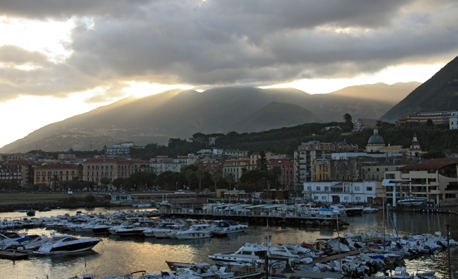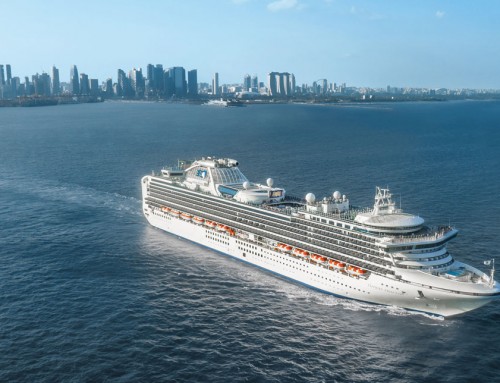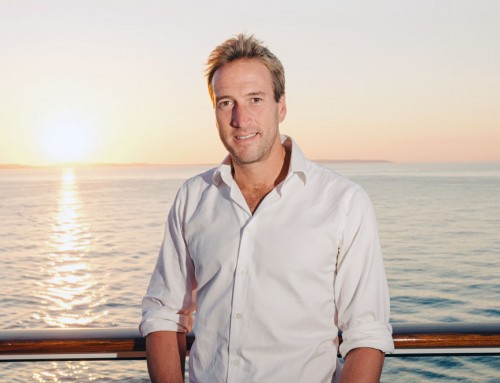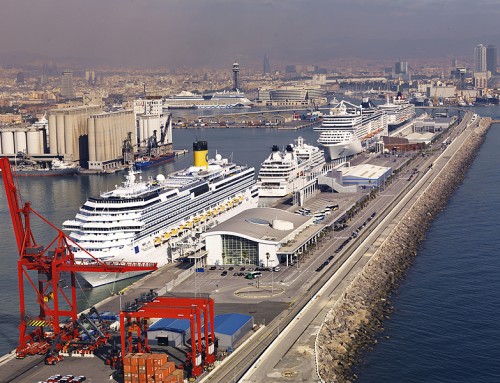
If the news reports are to be believed, there could be demonstrators on the streets and police firing tear gas grenades when mv Discovery and its passengers arrive in Athens on Saturday.
They had better be warned – the intrepid Discoverers won’t stand for any nonsense, especially if it threatens to affect either the euro in their pockets or their planned excursions to the Acropolis, the Corinth Canal, or Mycenae and Epidaurus.
My fellow passengers on Aegean Odyssey last month showed similar determination to triumph over adversity on a visit to Pompeii and Herculaneum, two towns devastated by the eruption of Vesuvius in 79 AD..
The first problem was that high winds threatened to make tendering ashore, from an anchorage off Sorrento, into an uncomfortable and dangerous exercise.
The solution to that was to divert to the small port of Castellammare di Stabia (above, at sunrise), and I can’t think why that wasn’t the first choice anyway. The town itself might not have much to offer apart from a pier perfectly capable of accommodating Aegean Odyssey but its main advantage is its proximity to the sites of Pompeii and Herculaneum which is where we were all heading; the road journey was much shorter than from Sorrento.
It was not, however, straightforward.
The plan had been to visit Pompeii in the morning, and enjoy a leisurely lunch before moving on to Herculaneum. As we left the ship at 8.00 am to walk to the coaches, cruise co-ordinator Alison was announcing that “for unknown reasons” Pompeii would not be open until after 10.00 so the tour would be reversed.
En route to Herculaneum, more news came through: neither site would be open until 11.00 am, and our early start looked like being in vain.
Not to worry, we would be getting a quick tour of the city of Naples to compensate – and fill the time. All well and good except most of it was spent in a Neapolitan traffic jam before we eventually arrived at the Herculaneum car park with 40 minutes still to fill before the striking custodians opened the gates.
With a limited amount of time available before we had to leave for lunch, and with classics professor Mary Beard leading the way, a small group of us left the main party to concentrate on some of the more gruesome sights. First to a vast cesspit, whose contents have given scientists much to chew over, so to speak, in discovering how Herculaneum’s population lived and ate, and then the caves by the town’s former beach, where hundreds died trying to flee the volcanic debris.
By the time we entered Pompeii the crowds, and the sun, were at their height. So once again the tour was taken at a brisk trot, pausing to decipher the graffiti scratched into the walls of the brothel, and stopping to gaze open-mouthed at glass cases containing plaster casts of the bodies of Pompeiians preserved in their death throes for ever.
Mary Beard was also determined to show us the interior of the Forum Baths – an interesting insight into Roman hygiene and relaxation, but I doubt they ever smelt so strongly of sweat and human bodies as they did on this humid September afternoon.
And then it was all over. Back on the bus, return to the ship, dress for dinner, and on to the next port of call. It’s a hard life . . .






we had a really good time in the end I think! Mary